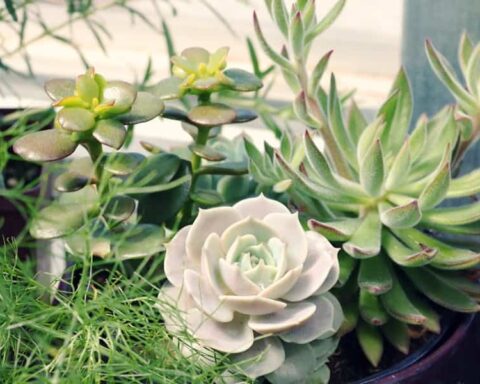Beans are a staple ingredient in many cuisines around the world, valued for their versatility and nutritional benefits. Before cooking, beans are typically soaked to reduce cooking time and aid in digestion. However, the question arises: can you oversoak beans? In this article, we will explore the purpose of soaking beans, the science behind them, and the potential risks of oversoaking. We will also provide valuable tips on how to properly soak beans and discuss alternative methods for preparing beans. Let’s dive into the world of beans and unravel the mystery of oversoaking.
Can You Oversoak Beans?
Yes, you can oversoak beans. Prolonged soaking can lead to nutrient loss, changes in texture and flavor, and increased fermentation and gas production. It is important to follow recommended soaking times and techniques to avoid oversoaking and achieve the desired results in your bean dishes.
The Purpose Of Soaking Beans
Beans have a dense structure and contain complex sugars that can take a significant amount of time to break down during cooking. Soaking beans helps to soften them, which in turn reduces the overall cooking time. This is particularly beneficial for larger beans, such as kidney beans or chickpeas, which can be quite time-consuming to cook without prior soaking.
Beans contain natural compounds, such as phytic acid and oligosaccharides, which can cause digestive discomfort and gas production. Soaking beans activates enzymes that help break down these compounds, making them easier to digest. This can alleviate digestive issues and make beans more tolerable for individuals who are sensitive to them.
Soaking beans hydrates them and allows water to penetrate their tough outer layers. This hydration process softens the beans, resulting in a more pleasant texture when cooked. Properly soaked beans tend to be creamier, less mealy, and more evenly cooked, enhancing the overall enjoyment of the dish.
Soaking beans can improve the bioavailability of certain nutrients. The process helps reduce the levels of anti-nutrients, such as phytic acid and enzyme inhibitors, which can hinder the absorption of minerals like iron, zinc, and calcium. By soaking, you can unlock more of the nutritional potential of beans, making their valuable nutrients more accessible to your body.
How To Properly Soak Beans?
Sorting and rinsing: Start by sorting through the beans to remove any debris, damaged beans, or stones. Then, rinse the beans thoroughly under cool running water to remove any dirt or dust.
- Choose the soaking method: There are three common methods for soaking beans: overnight soaking, quick-soaking, and hot-soaking. Choose the method that suits your schedule and cooking preferences.
- Overnight soaking: Place the sorted and rinsed beans in a large bowl and add enough water to cover them by at least a few inches. Allow the beans to soak overnight or for a minimum of 8 hours. This method provides ample time for the beans to absorb water gradually.
- Quick-soaking: In a large pot, bring the sorted and rinsed beans to a boil in water. Boil for 2-3 minutes, then remove from heat. Cover the pot and let the beans sit in the hot water for 1 hour. This method reduces the soaking time while still allowing the beans to hydrate adequately.
- Hot-soaking: In a large pot, bring the sorted and rinsed beans to a boil in water. Boil for 2-3 minutes, then remove from heat. Let the beans soak in the hot water for 4 hours. This method is a middle ground between overnight soaking and quick-soaking.
- Determine the soaking time: The soaking time varies depending on the type and size of the beans. Generally, larger beans require longer soaking times. Refer to specific recipes or cooking guidelines to determine the appropriate soaking duration for the beans you are using.
- Water-to-bean ratio: Use enough water to fully submerge the beans during soaking. A good rule of thumb is to use 3 cups of water for every 1 cup of dried beans. Adjust the amount accordingly based on the quantity of beans you are soaking.
- Soaking container: Choose a container that is large enough to accommodate the expanded beans and sufficient water. Make sure there is enough space for the beans to expand as they absorb water.
- Cover and soak: Cover the soaking container with a lid or plastic wrap to prevent any debris or contaminants from entering. Let the beans soak undisturbed for the recommended duration according to your chosen soaking method.
Importance Of Proper Soaking Techniques
- Even and consistent cooking: By following the recommended soaking techniques, you allow the beans to absorb water evenly. This helps in achieving uniform cooking, ensuring that all beans are tender and cooked to the desired texture. Improper soaking techniques, such as using insufficient water or soaking for too short a time, may result in unevenly cooked beans with some being undercooked and others overcooked.
- Texture and flavor preservation: Soaking beans properly helps preserve their natural texture and flavor. Oversoaking can lead to mushy beans with a compromised texture while undertaking can result in beans that are too firm and hard. Following the right soaking techniques helps strike the balance and ensures that the beans retain their desirable texture and flavor during the cooking process.
- Digestive benefits: Soaking beans using the appropriate techniques aids in reducing anti-nutrients and making them more digestible. These anti-nutrients, such as phytic acid and enzyme inhibitors, can interfere with nutrient absorption and cause digestive discomfort. Proper soaking techniques help activate enzymes that break down these compounds, making the beans easier on the digestive system.
- Time efficiency: Different beans require different soaking times. Proper soaking techniques take into account the specific soaking requirements of each type of bean. By following these techniques, you can ensure that the beans are adequately soaked within the recommended time frame. This not only saves time during the actual cooking process but also helps maintain the overall cooking schedule.
- Nutrient preservation: While soaking helps improve nutrient availability, it is important not to oversoak beans. Proper soaking techniques ensure that the beans receive the necessary hydration without excessive water absorption, which can lead to nutrient loss.
The Potential Risks Of Oversoaking Beans
- Nutrient loss: Prolonged soaking can lead to nutrient loss in beans. Water-soluble nutrients, such as vitamins and minerals, can leach out into the soaking water over time. If the soaking water is discarded, these nutrients may be lost. To minimize nutrient loss, it is advisable to use the soaking water for cooking or consume it as part of the dish.
- Texture and flavor changes: Oversoaking can result in beans that are excessively soft and mushy. The prolonged exposure to water can cause the beans to break down and lose their desired texture. Additionally, oversoaked beans may lose some of their natural flavors, resulting in a bland taste. It is important to adhere to the recommended soaking times to maintain the desired texture and flavor of the beans.
- Increased fermentation and gas production: When beans are soaked for an extended period, especially beyond the recommended time, there is a higher likelihood of fermentation occurring. Fermentation can lead to increased gas production and bloating, causing digestive discomfort. Following the proper soaking guidelines helps minimize the risk of excessive fermentation and associated digestive issues.
- Loss of structural integrity: Oversoaked beans may lose their structural integrity and become too fragile. They can break apart easily during cooking, resulting in a less visually appealing dish. This can be especially problematic when using beans in recipes that require intact beans, such as salads or stews. Proper soaking times help maintain the structural integrity of the beans.
Conclusions
In conclusion, proper soaking of beans plays a crucial role in achieving optimal cooking results. It helps reduce cooking time, aids in digestion, improves texture, and enhances nutrient availability. By following recommended soaking techniques, you can ensure even and consistent cooking, preserve the beans’ texture and flavor, promote digestive health, and retain the nutritional value of the beans. Soaking methods such as overnight soaking, quick-soaking, or hot-soaking can be chosen based on personal preferences and time constraints. By mastering the art of proper soaking, you can elevate your bean dishes to new heights of flavor and satisfaction.
FAQ’s
How Long Should I Soak Beans Overnight?
The recommended soaking time for overnight soaking is typically 8 to 12 hours. This allows the beans to absorb enough water to soften and hydrate properly. You can soak them before going to bed and then cook them the next day.
Can I Soak Beans For Too Long?
Yes, beans can be oversoaked if left in water for an extended period. Prolonged soaking, beyond the recommended time, can lead to mushy texture, nutrient loss, increased fermentation, and flavor changes. It’s important to follow the recommended soaking times to avoid these issues.
Can I Soak Different Types Of Beans Together?
It is generally recommended to soak different types of beans separately. This is because different beans have varying soaking times and water absorption rates. Soaking them separately ensures that each type of bean receives the appropriate soaking time and water-to-bean ratio for optimal results.
Can I Skip The Soaking Step When Cooking Beans?
While soaking is not always mandatory, it is highly recommended. Soaking helps reduce cooking time, enhance digestibility, and improve texture. However, there are alternative methods like using a pressure cooker or pre-soaking beans in hot water that can be used to cook beans without soaking.
Can I Reuse The Soaking Water?
It is generally not recommended to reuse the soaking water. Soaking water may contain some anti-nutrients and substances released from the beans. Discarding the soaking water and rinsing the beans before cooking helps remove any impurities and improves the overall quality of the cooked beans.










